Table of Contents
Toggle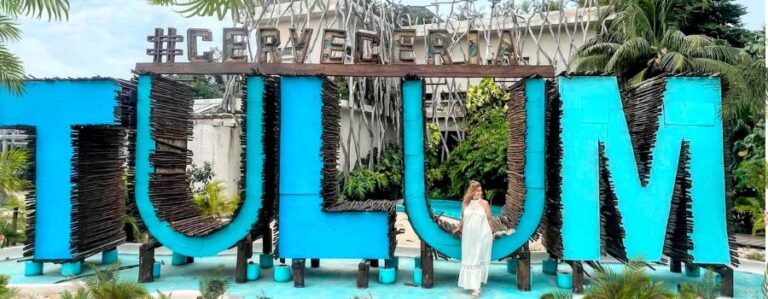
June 12, 2025
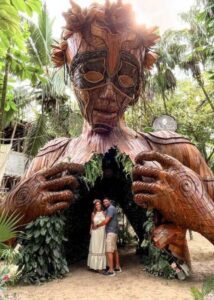
Tulum has become one of the most popular places to visit in Mexico—and it’s easy to see why. Sitting along the Caribbean coast of the Yucatán Peninsula, it has stunning beaches, ancient ruins, sacred cenotes, as well as a unique mix of boho charm, luxury, and local culture. One of the most iconic Instagram spots in the heart of Tulum is the Ven a la Luz sculpture. I had seen it online so many times and couldn’t wait to go see it in person. During our stay in the Riviera Maya this past Christmas, I finally got the chance to go. If you’re thinking about adding it to your itinerary, here’s everything you need to know before you go.
You’ve likely seen pictures on social media: a towering wooden sculpture of a woman opening her chest to reveal lush greenery inside. Ven a la Luz, which translates to “Come Into the Light,” is more than just a photo-op. Created by South African artist Daniel Popper for the 2018 Art With Me festival, the 33-foot-tall sculpture is made of wood, steel, rope, and natural fibers. It’s designed to symbolize the connection between humans and nature, and the gesture of the open chest represents vulnerability and harmony with the world around us.
Now, the sculpture is permanently installed in a small garden just outside the Ahau Tulum hotel, which is located on Tulum’s main beach road in the Hotel Zone, and it’s since become one of the most photographed landmarks in the Riviera Maya. The sculpture is tucked away around a corner and not clearly visible from the road, which can make it a little tricky to find.

One thing many people don’t realize until they get there is that it’s not free to visit up close. As of our visit (Dec 2024), the cost was $5 USD per person to enter the sculpture area and take photos. Once inside, you’ll also have access to a few other art installations, but Ven a la Luz is definitely the main draw.
If you’re driving in from outside the hotel zone, you’ll also need to pay for parking – usually around $10 USD depending on the lot. Even if it’s just for a quick stop. Tulum isn’t cheap, and this is a good example of how even a short visit can add up.
As of June 2025, the park is open from 9am to 10pm everyday. This may vary by season. You can always reach out to the Ahau Tulum hotel directly if you have any additional questions. Click here to link to their website’s contact page.

The sculpture itself is stunning in person. It’s detailed, creative, and has a presence that makes you stop and take it all in. But don’t expect to have it to yourself. There’s usually a line of people waiting to take their turn for a photo, and that line can move slowly. There’s no one monitoring how long each person gets for their photo-op (unless this has changed since our visit), and some visitors take their time. Patience is key. Go early in the day if you want better lighting and shorter wait times. We ended up waiting about 20 minutes when we went, and that was during a less busy period.
These are a couple of the additional art pieces you’ll find in the outdoor gallery area, which is included with your admission.
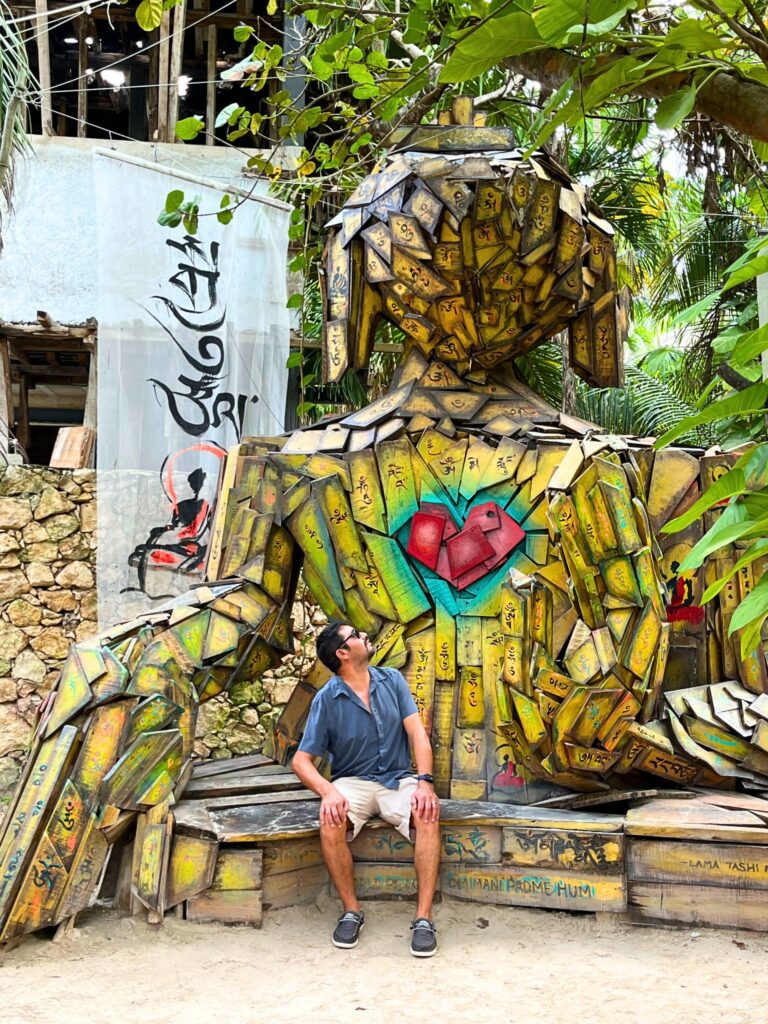
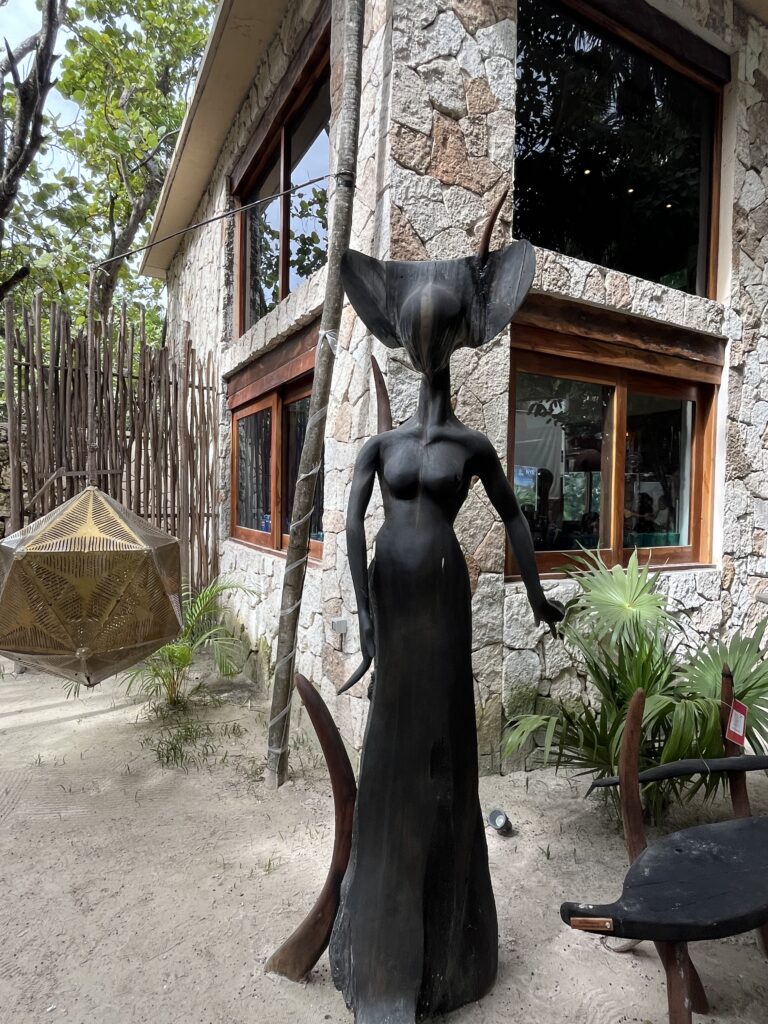

Bring cash for entry and parking
Expect to wait in line for a photo
Go early in the morning for shorter lines and better light
it is located next to the hotel Ahau Tulum
Wear sunscreen and bring water if visiting during the heat of the day



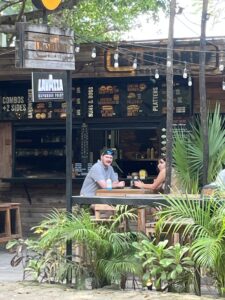 Things to Do After Seeing Ven a la Luz
Things to Do After Seeing Ven a la Luz
Once you’ve taken your photos, there’s no need to rush off. The sculpture sits in a lively stretch of the Hotel Zone, and there’s plenty more to see, do, and eat nearby:
Grab a smoothie or light bite at Matcha Mama or Raw Love, both known for their tropical vibes and fresh, plant-based options.
Relax at Tantra Beach Club, a luxury, Bali-inspired spot with cabanas, beachfront views, and upscale drinks.
Enjoy dinner at Tatewari, a cozy jungle-side restaurant that specializes in open-fire cooking with local ingredients.
Browse boutique shops along the beach road, where you’ll find handmade jewelry, stylish beachwear, and artisanal goods.
Book a spa massage at one of the many nearby hotels offering beachside wellness treatments.
Kick back at a beach club like Nalam or Coco Tulum—perfect for sunbathing, sipping something cold, and enjoying the view.
With so much packed into this area, you can easily turn your visit to Ven a la Luz into a full afternoon of food, fun, and laid-back exploring.
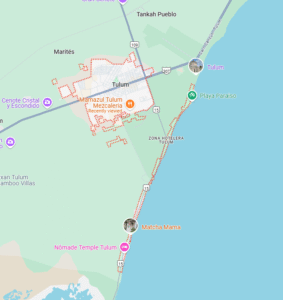
Tulum is divided into two main areas: Tulum Pueblo (the town) and the Hotel Zone (along the beach). These two areas are connected by two main roads—Avenida Kukulkan and Avenida Coba—which stretch about 2 to 3 miles.
The Hotel Zone is where you’ll find most of the beachfront hotels, high-end restaurants, and art installations like Ven a la Luz. It’s stylish, luxurious—and expensive. On the other hand, Tulum Pueblo is more laid-back, local, and budget-friendly, with plenty of taco stands, artisan markets, and casual eateries. If you’re planning to stay in town but want to visit the beach (or vice versa), you’ll need a plan for getting around.
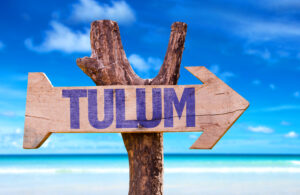
Tulum is small, but navigating between town and the beach can get tricky. Walking is doable within Tulum Pueblo, but walking from the town to the beach is a long trek (about 3 km/1.8 miles) and not very pedestrian-friendly.
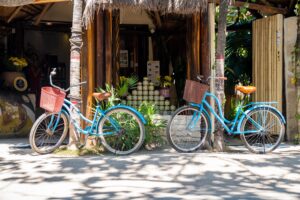
Bicycles are one of the best ways to get around. Many hotels offer bike rentals, or you can rent from local shops such as Ola Bike Tulum starting around $12 USD per day. There’s also the option to rent an electric bike for around $30 USD per day Real E-Bikes. Both main roads to the beach—Avenida Coba and Avenida Kukulkan—are paved and bikeable.
 Colectivos (shared vans) are a budget-friendly option if you’re staying in town. They run frequent routes and cost less than a dollar for local rides. Just flag one down and tell the driver where you’re going.
Colectivos (shared vans) are a budget-friendly option if you’re staying in town. They run frequent routes and cost less than a dollar for local rides. Just flag one down and tell the driver where you’re going.
Taxis are everywhere but expensive. A short ride from town to the beach can cost $15–20 USD or more, and prices go up at night or during busy seasons. Always agree on the price before you get in the taxi. There were no options for UBER when we were there.

Renting a car is a smart option if you plan to explore areas outside of Tulum. We used BGH Car Rental because of their great reviews and fair pricing. We paid $400 for a full week, including insurance. Of course, rates can vary depending on the season, but based on our experience, BGH lived up to the hype with smooth service and no surprises.
Not all car rental companies are created equal. Some travelers have run into issues like aggressive insurance upselling or being charged for damage they didn’t cause. Since parking in Tulum can be tight, it’s easy for your car to get dinged without you even knowing. That’s why we always recommend choosing a well-reviewed rental agency and reading the fine print before you book.
That said, there are a few things to be aware of. Traffic in the Hotel Zone can get really congested, and parking is both limited and pricey. You’ll also find police checkpoints, and unfortunately, some foreign drivers have reported being stopped and asked to pay questionable “fines.” We’ve experienced this ourselves, so yes- it does happen.
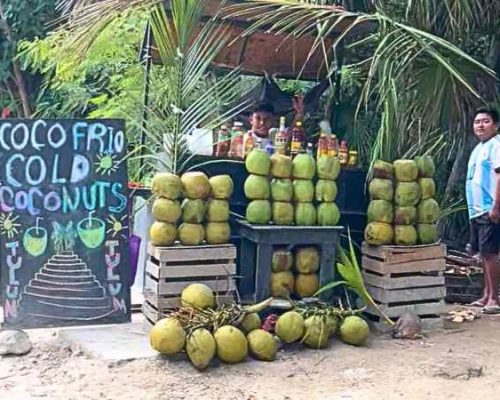
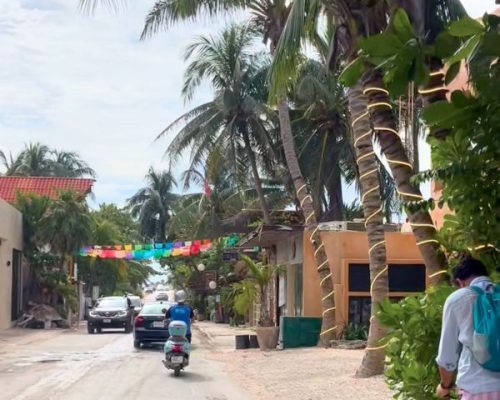
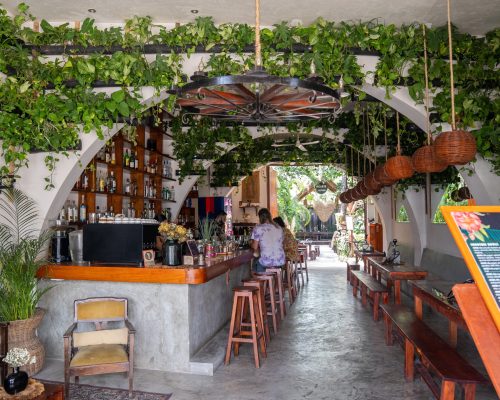
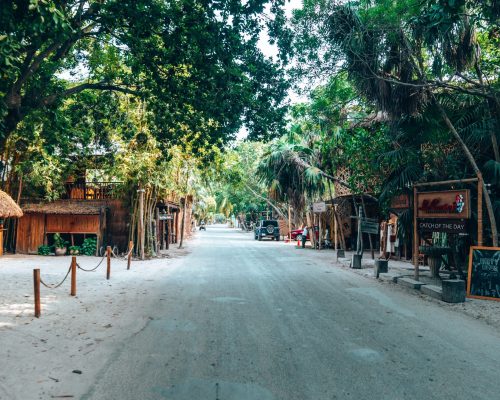

Tulum isn’t just art installations and yoga retreats—there’s a lot more to explore.
One must-see stop is the Tulum Ruins, once an important ancient city on the coast of Mexico, used for trade and religion between the 11th and 16th centuries. It sits on a cliff overlooking the sea and is known for its main building, El Castillo, which was both a temple and a guide for sailors. The ruins are located about 15–20 minutes from the Tulum Hotel Zone.
For all the details such as admission fees, how to get there, and what to watch out for, you can check out my full blog post on visiting the Tulum Ruins here.
 Adventurers can go zip-lining or off-roading through the jungle, or explore one of the nearby cenotes. Cenote Dos Ojos and Sac Actun are two of the most well-known spots in the area, famous for their expansive underwater cave systems where you can swim, snorkel, or dive. I also want to mention Cenotes Casa Tortuga, which quickly became a favorite of ours. The guided tour there takes you through four completely different cenotes, so you get to experience everything from open-air pools to cave-style cenotes all in one visit. If you want a detailed rundown of what to expect, I have a full blog post on that here.
Adventurers can go zip-lining or off-roading through the jungle, or explore one of the nearby cenotes. Cenote Dos Ojos and Sac Actun are two of the most well-known spots in the area, famous for their expansive underwater cave systems where you can swim, snorkel, or dive. I also want to mention Cenotes Casa Tortuga, which quickly became a favorite of ours. The guided tour there takes you through four completely different cenotes, so you get to experience everything from open-air pools to cave-style cenotes all in one visit. If you want a detailed rundown of what to expect, I have a full blog post on that here.
Nature lovers should head to Punta Laguna Nature Reserve, where you can hike jungle trails and possibly spot howler or spider monkeys.
After all the exploring, cool off with a cold drink at a mezcalería, grab tacos at a roadside stand, or enjoy dinner at one of Tulum’s many chef-driven restaurants.
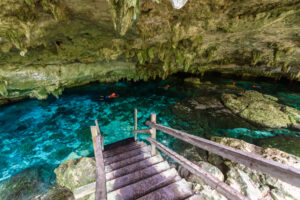
Ven a la Luz is definitely worth seeing—it’s beautiful and majestic. But like much of Tulum, it’s also commercialized and comes at a cost. Still, if you know what to expect and plan ahead, it is worth the visit.
The real magic of Tulum goes beyond one sculpture or one photo. It’s in the balance between jungle and sea, in the contrast between rustic streets and luxury beach clubs, in the food, the art, the cenotes, and the culture.
Check Out These Blogs Next